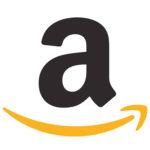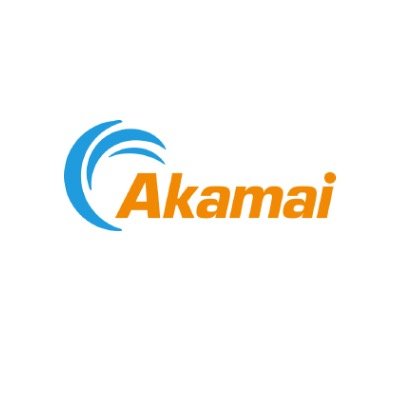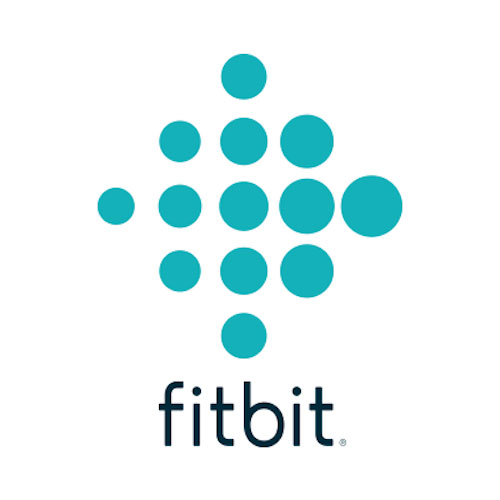Year: 2018
Gaia: Gaining Ground in Internet Streaming
 “If we want to set out on the arduous search for the truth, we must all summon up the courage to leave the lines along which we have thought until now, and as the first step begin to doubt everything that we previously accepted as correct and true. “
“If we want to set out on the arduous search for the truth, we must all summon up the courage to leave the lines along which we have thought until now, and as the first step begin to doubt everything that we previously accepted as correct and true. “
—Erich von Daniken
With trailing 12-month sales of $40 million and a market cap of roughly $220 million, Gaia, based in Boulder, Colorado, is a leading provider of new age streaming video services. With over 500,000 subscribers to its monthly service, the company focuses on several genres, including yoga, seeking truth, transformation, and alternative healing, and thus occupies a unique niche within the streaming content landscape. The company boasts over 8,000 titles, 90 percent of which are unique to Gaia. Subscribers reside in 185 countries, with about 30 percent of revenue coming from international markets.
Though the majority of viewership is focused on several thousand titles in its library, no single title accounts for more than one percent of viewership. The company continues to create new video content in its Colorado studios.
Gaia was founded as Gaiam in 1988 in Boulder, Colorado by entrepreneur Jirka Rysavy, who was also a founder of Corporate Express, and Crystal Market, a natural foods market later acquired by Wild Oats Market. Gaiam began with a mission to provide products to those in pursuit of a healthy lifestyle and a respect for the environment, based on ecological sustainability, consistent with the corporate ethos of other Boulder-based companies, such as Wild Oats Market, and Celestial Seasonings. Gaiam, the company’s original name, came about as the fusion of Gaia, the ancient Greek deity, who represented the idea of the earth as a living system, and “I am,” meant to evoke a sense of connectedness with the planet.
2016 was a transformational year for Gaiam. In May, the company sold its equity interest in Natural Habitat, its eco-travel subsidiary, for $13 million in cash. Later that month it announced the sale of its Gaiam Brand business to Sequential Brands Group (NASDAQ: SQBG) for $167 million. The sale included the company’s branded yoga, fitness and wellness consumer products, and content, with the exclusion of the streaming rights to that content. The sale of its branded products business allowed Gaiam to focus exclusively on streaming video services and DVD distribution, and the company changed its name to Gaia. The new company utilized $77 million to repurchase 9.6 million Class A common stock shares, and 840,000 vested stock options at a fixed price of $7.75 per share in a tender offer completed in July of 2016. This transaction reduced its shares outstanding from 24.6 million to 15 million. By the end of 2016, Gaia had over 200,000 subscribers to its internet video service.
In March of 2018, Gaia executed a secondary stock offering, and sold 2.3 million Class A common shares at $15 per share. In connection with the offering, certain directors and officers of the company agreed to purchase roughly 135,000 shares. Gaia’s advisor for the transaction was Roth Capital Partners. The offering was led by B. Riley FBR, Lake Street Capital Markets, and Dougherty & Company. Gaia used a portion of the $32 million in net proceeds to pay down $12.5 million in debt. In early September of 2018, Gaia announced that it was about to cross the 500,000 subscriber mark, which compared to 311,000 subscribers in the prior year, and marked a major milestone in its quest to achieve one million subscribers by the end of 2019.
Gaia has taken an aggressive approach to marketing by investing 90 to 120 percent of streaming revenue in the last few quarters in customer acquisition as part of its goal to sign up one million subscribers by the end of next year. Year to date revenue has grown an impressive 58 percent, though its operating losses have widened to $25 million, from $19 million over the same period last year. The company currently intends to utilize most of the $31 million in cash on its balance sheet, along with a secured line of credit of $12 million to aggressively target new customers over the course of the coming year, with the intent of letting its cash balance fall to between $2 and $5 million, before it begins to generate profit on a consistent basis.
Gaia recently launched a new channel, focused on alternative healing, drawing upon roughly 1,000 titles from its existing library, in an effort to more effectively merchandise the content, and attract new subscribers with interest in this segment. The company also intends to launch a new premium service that will be priced in the vicinity of $299 per year, which will include access to live events.
The New York Times: Failing or Thriving?
 “Were it left to me to decide whether we should have a government without newspapers or newspapers without a government, I should not hesitate a moment to prefer the latter.”
“Were it left to me to decide whether we should have a government without newspapers or newspapers without a government, I should not hesitate a moment to prefer the latter.”
—Thomas Jefferson to Edward Carrington, 1787
With over four million paid subscribers to its news, website content, and daily newspaper, The New York Times Company (NYSE: NYT) has been a trusted source of news coverage since its inception more than 165 years ago. Launched in 1851 as the New-York Daily Times by Henry Jarvis Raymond and George Jones, The Times gained momentum as a trusted news source a decade later, when it expanded its six day per week publication to seven days, in order to cover breaking news relating to The Civil War. The Times further burnished its credentials as a source of incisive coverage of the events of the day when it exposed the corrupt practices of William M. “Boss” Tweed, a New York City leader of the Democratic Party political machine.
Rescued from financial ruin by the Ochs-Sulzberger family in 1896, the paper enhanced its reputation for quality journalism. Under the slogan “All the News That’s Fit to Print” which first appeared alongside the paper’s moniker in 1897, The Times began to distance itself from many of its more sensationalistic competitors, who emphasized the more lurid stories of the day in their reportage. The Times’ focus on quality investigative journalism has enabled it to win over 122 Pulitzer Prizes—more than any other news organization—including 61 Pulitzer Prizes in the last 25 years.
The New York Times has also developed a reputation for leadership in maintaining the rights of a free press to publish articles of interest to the public at large, despite objection from the subjects of its coverage. In some cases, the company has argued its position before the US Supreme court, as it did in New York Times Co. v Sullivan in 1964, when the court established the “actual malice” standard that requires public officials or public figures acting as plaintiffs against a news organization to establish that statements about them were published in reckless disregard of their truth or falsity in order to meet the threshold of defamatory or libelous intent.
As an independent newspaper, The New York Times has had to balance its role as a responsible purveyor of news, with its responsibility to protect sensitive national security information, sometimes at the behest of the US government. Over the years the newspaper has either delayed or withheld the publication of articles, often in consultation with government officials over fears of placing lives at risk. However, the paper has at times made the decision to publish articles that it believed to be in the public interest, despite objections from the government.
In 1971, The New York Times, along with the Washington Post played a key role in publishing portions of the Pentagon Papers, a classified US Department of Defense history of the government’s conduct in the Vietnam War. When The New York Times began to print excerpts from the report, the Nixon administration sought to restrain publication on the grounds that material leaked interfered with government’s ability to conduct the war, and enter into negotiations for peace. When the newspapers refused to comply with the government’s request, the Nixon White House obtained a federal court injunction to cease publication, and called for the source of the leaks, Daniel Ellsberg, to be prosecuted under the Espionage Act of 1917. Simultaneous appeals of the government’s actions by the newspapers wound their way up the judicial chain to the US Supreme Court, which decided in a 6-3 decision in 1971 that the injunctions on the newspapers were unconstitutional prior restraints, and crucially, that the executive branch had not met the burden of proof required to enforce its order.
In addition to its award-winning news coverage over many years, the newspaper has been cited in numerous studies for the quality of its work. As a result of its reputation for quality, independent investigative journalism, The Times has become the newspaper of record for national and global events, as archived copies of the newspaper housed in libraries throughout the world are drawn upon by researchers, students, and general readers.
For more on Battle Road’s current perspective on The New York Times, please contact info@battleroad.com
Akamai Technologies: A Growing Force in Cyber-Security
 Founded twenty years ago by MIT graduate student Daniel Lewin, and Dr. Tom Leighton, his applied mathematics professor, Akamai Technologies, based in Cambridge, MA specializes in internet content delivery, web performance, and cybersecurity software. With trailing twelve month revenue of $2.6 billion, and a market cap of roughly $13 billion, the company serves more than 60 percent of the Fortune 500, each of the top 15 US and Canadian retailers, all of the top 20 global ecommerce companies, the 50 largest global carriers, 47 of the top 50 American television networks, 21 of the top 25 global gaming companies, 17 of the top 20 global social media platforms, the largest 25 banks in the US, the 10 largest global auto manufacturers, and all branches of the US military. More than 500 customers spend more than $1 million annually with Akamai, and no customer accounts for more than four percent of sales.
Founded twenty years ago by MIT graduate student Daniel Lewin, and Dr. Tom Leighton, his applied mathematics professor, Akamai Technologies, based in Cambridge, MA specializes in internet content delivery, web performance, and cybersecurity software. With trailing twelve month revenue of $2.6 billion, and a market cap of roughly $13 billion, the company serves more than 60 percent of the Fortune 500, each of the top 15 US and Canadian retailers, all of the top 20 global ecommerce companies, the 50 largest global carriers, 47 of the top 50 American television networks, 21 of the top 25 global gaming companies, 17 of the top 20 global social media platforms, the largest 25 banks in the US, the 10 largest global auto manufacturers, and all branches of the US military. More than 500 customers spend more than $1 million annually with Akamai, and no customer accounts for more than four percent of sales.
Akamai’s software and services are delivered over a proprietary global network that has grown to exceed 240,000 servers embedded in 1,700 networks in 3,900 locations in 133 countries. The distributed nature of this global network with servers located locally at the “edge” of the internet ensures that content is delivered quickly and efficiently.
Versus four years ago, when cloud security comprised just $50 million in annual revenue, the Cambridge-based company has developed a growing cloud security business, which contributed $486 million in revenue last year, or 20 percent of total sales. At present growth rates, even in the absence of acquisitions, cyber security could become the company’s largest business within four years.
Increasingly sophisticated cyber attacks funded by governments, organized crime, and political activists place banks, global media, and governments and their constituents at increased risk of fraud, identity theft, loss of reputation, and loss of revenue. In response, Akamai has developed a differentiated series of cloud software services designed to protect against such attacks. The basic premise behind its approach, and the key demand driver for its services is that it is much easier to attack a corporate network, than to protect it, as even a single hole can become the stalking horse for massive bot armies that can bring a network to its knees.
Through its early work with Kona Site Defender, which protects websites and APIs against cyber attacks, Akamai developed a core competence in protecting against Distributed Denial of Service (DDoS) attacks against data center software assets. Such attacks involve the high-jacking of a large number of computer servers to overwhelm a target website or data center with malicious traffic. DDoS attacks, launched by political activists, cyber criminals, and hackers seeking notoriety have become the bane of large bank and ecommerce companies in particular. Akamai has since developed and acquired new capabilities to protect against DDoS attacks, and added products to protect against web application layer attacks, as well as solutions to block and mitigate malware, ransomware, and phishing attacks.
Akamai has also had success with Bot Manager, a product launched in 2016, which provides insight into the amount of bot traffic accessing a website, as well as prevention of price and content scraping, which is particularly worrisome to ecommerce companies. Utilizing Bot Manager, the company reports that a single bank achieved a reduction in account takeovers from 8,000 per month to just one or two per month. Bot Manager has thus helped save the bank tens of millions of dollars in direct fraud each year.
From its roots in content delivery and web performance, Akamai has been able to leverage its massive, distributed global network to delivery increasingly sophisticated lines of defense against cyber security attacks. No longer a noise level item in its income statement, cloud security now exceeds 20 percent of sales, and is growing rapidly. As IT security professionals increasingly embrace cloud solutions for perimeter defense, Akamai is well-positioned for growth.
Fitbit: Struggling to Stay in Shape
 With trailing 12-month sales of $1.6 billion, a market cap of $1.8 billion, $658 million in cash and zero bank debt, Fitbit, founded in 2007, and based in San Francisco, CA, is the largest provider of internet-connected health and fitness tracking devices. The company addresses a multi-billion dollar annual revenue opportunity comprised of health-conscious consumers who wish to track daily progress toward achieving weight loss and fitness goals. The company offers a broad product line, consisting of six activity trackers that range in price from $60 to $150 at retail, and two smartwatches, priced at $200 and $300, respectively. Fitness trackers account for roughly 70 percent of revenue currently, with smartwatches accounting for most of the remainder.
With trailing 12-month sales of $1.6 billion, a market cap of $1.8 billion, $658 million in cash and zero bank debt, Fitbit, founded in 2007, and based in San Francisco, CA, is the largest provider of internet-connected health and fitness tracking devices. The company addresses a multi-billion dollar annual revenue opportunity comprised of health-conscious consumers who wish to track daily progress toward achieving weight loss and fitness goals. The company offers a broad product line, consisting of six activity trackers that range in price from $60 to $150 at retail, and two smartwatches, priced at $200 and $300, respectively. Fitness trackers account for roughly 70 percent of revenue currently, with smartwatches accounting for most of the remainder.
In the fourth quarter of 2016, Fitbit hit a brick wall amid execution challenges related to manufacturing and channel management. Missteps included being slow to address excess channel inventory, as well as operational challenges, including a poorly-timed headcount increase of 80 percent during 2016. In response to changing market conditions, management took corrective action at the start of 2017, including a six percent workforce reduction, and streamlining the number of devices offered. In addition, the company was reorganized around fitness devices and enterprise health.
While Fitbit continues to maintain a strong presence in the activity tracking market, the success of the Apple Watch, a higher end, more full-featured family of devices has redefined the market, and, to some degree, siphoned off demand for activity trackers. Fitbit has responded to this changing market dynamic through the introduction of two smartwatches, the Ionic, launched in late 2017, and more recently, the Versa. However, the company continues to face price competition in its core fitness tracker market, and has experienced soft demand for these products in the US in particular, its largest market. As a result, greater emphasis will be placed on smartwatches for future growth.
While smartwatches carry higher ASPs, they also feature lower gross margins than fitness trackers. Near term, the company is unlikely to improve by much its current gross margin, which hovers in the low 40 percent range. In the meantime, the company’s current cost structure prevents it from achieving break-even. While Fitbit maintains a strong cash position of more than $658 million and no debt, it has steadfastly refused to implement a share buy-back, preferring instead to utilize cash for leasehold improvements, along with tuck-in acquisitions, most recently geared to expanding its limited position in health-related services.
The firm’s reliance on the retail channel, including mass merchants and specialty retailers remains a source of concern, given the mixed signals coming from the retail industry, as well as a policy of recognizing revenue based on sell-in, rather than sell-through. As a final investor caveat, we note its dual class share structure guarantees the founders perpetual control of the voting rights of the company, which keeps it insulated from shareholder input. Overall, we see Fitbit as a company with longer term appeal, if it can manage to slim down for future success.
Facebook: Grappling with User Privacy
 Balancing user privacy with the desire of advertisers to collect insightful user data is a challenge Facebook has faced since its inception. As evidenced by the company’s recent affirmation of its ad-driven business model, Facebook has no plans to alter its basic value proposition. However, recent industry events have once again brought the conflict between user privacy and advertiser demands to the attention of regulators in the US and in Europe.
Balancing user privacy with the desire of advertisers to collect insightful user data is a challenge Facebook has faced since its inception. As evidenced by the company’s recent affirmation of its ad-driven business model, Facebook has no plans to alter its basic value proposition. However, recent industry events have once again brought the conflict between user privacy and advertiser demands to the attention of regulators in the US and in Europe.
By way of background, less than a year before its IPO, Facebook signed a consent decree with the US FTC, under which it agreed to settle charges without admitting or denying guilt that it had deceived consumers by telling them they could keep information private, but then sharing it repeatedly. In signing the consent decree, Facebook agreed that it must obtain consumers’ express consent before their information is shared beyond the privacy settings they create. As part of the settlement, Facebook agreed to audits conducted by independent third parties once every two years for the next 20 years to verify that its security procedures exceed the standards set by the FTC. The FTC is currently investigating whether Facebook has violated the consent decree, which could result in penalties of up to $40,000 per user per day.
Facebook maintains that the data harvested by a third party app utilized by the consultancy Cambridge Analytica was obtained and applied in violation of its policies, specifically procedures put in place in 2014 to prevent so-called “abusive apps” from gaining unauthorized data from Facebook users. The Cambridge Analytica imbroglio is particularly significant, in light of new privacy regulations that are being imposed by the European Union under the General Data Protection Regulation (GDPR), which goes into effect later this week. Under the new regulation, advertisers must be transparent about their use of customer data, and users must give their expressed consent to allow advertisers or other third parties to utilize their data. In response, Facebook and other internet advertisers are working to comply with European regulators, who could impose penalties of up to 20 million Euros, or up to four percent of annual revenue, whichever is greater. In the case of Facebook, a violation could result in a penalty of up to $1.6 billion.
The initial GDPR impact on Facebook is likely to be a decline in the rate of growth in its European user base, which currently stands at 282 million daily active users, or 19 percent of its user base. Beyond that, the impact is unclear. One school of thought suggests that Facebook could face declines in advertising revenue, based on a lower base of users reachable by advertisers. The counter argument is that users who give their consent will be more susceptible and receptive to ads that they are implicitly agreeing to view, thus making the remaining base of users even more valuable to advertisers.
In the mean-time Facebook is redoubling efforts to root out third party apps that violate its data privacy rules. Facebook has stated that it has more than 10,000 people working on security and safety issues now, with plans to double this number by the end of this year. Last week Facebook announced that it has already examined thousands of third party apps, and has suspended about 200, pending a thorough investigation into whether the apps misused user data. Any of the apps in question that are found to be in violation of Facebook’s policies will be banned from Facebook, and users of the app will be notified.
The recent Cambridge Analytica imbroglio, combined with the rollout of GDPR is likely to keep the spotlight on Facebook and other internet advertisers. By taking more proactive measures to ensure user privacy Facebook is likely to navigate the conflicting demands placed upon it by users, advertisers, and regulators.
Amazon.com: Eyeing the Home Robot Market?
 According to what appears to be a credible article in last week’s Bloomberg Technology, Amazon.com is proceeding with plans to create a home robot, through a product development effort that has been code-named Vesta, as part of its Lab126 consumer device division, based in Sunnyvale, California. Lab126, led by Greg Zehr, a former head of R&D for Palm, a pioneer in mobile computing, is credited with the introduction of Kindle e-book reader, and is responsible for the Amazon Echo, FireTV set top boxes, and Fire tablets. It is unclear what purpose an Amazon.com home robot would serve, but in general terms the speculation is that Amazon.com is looking to build on the success of the Amazon Alexa assistant and Echo home speaker product line by creating a roaming version of Alexa, perhaps with the ability to conduct basic house chores.
According to what appears to be a credible article in last week’s Bloomberg Technology, Amazon.com is proceeding with plans to create a home robot, through a product development effort that has been code-named Vesta, as part of its Lab126 consumer device division, based in Sunnyvale, California. Lab126, led by Greg Zehr, a former head of R&D for Palm, a pioneer in mobile computing, is credited with the introduction of Kindle e-book reader, and is responsible for the Amazon Echo, FireTV set top boxes, and Fire tablets. It is unclear what purpose an Amazon.com home robot would serve, but in general terms the speculation is that Amazon.com is looking to build on the success of the Amazon Alexa assistant and Echo home speaker product line by creating a roaming version of Alexa, perhaps with the ability to conduct basic house chores.
The authors of the article indicate that prototypes have been built with advanced cameras, and that Max Paley, a former Apple executive, is working on computer vision technologies for a home robot. The Bloomberg article suggests that Amazon.com plans to “seed” robots in homes by the end of this year, and could potentially launch a commercial robot sometime in calendar 2019. The article also indicated that based on Amazon’s prototypes and tests, it may choose not to enter the market.
Is Amazon.com’s Entry Plausible?
Despite its failure in the smart phone market, Amazon.com has emerged as a prolific consumer electronics product company, having made a number of successful bets, most notably having created the e-book market with the Kindle, and more recently creating the market for smart home assistants, via Alex and Echo. Importantly, Amazon has had its greatest success in categories that it creates. In the Kindle e-reader category, Amazon used to have some competition from the Nook, but not much anymore. Google, which is looking to parlay its success with Google Assistant into the Google Home product line, is playing a severe game of catch up to Amazon.com, as the Echo device family holds a more than two-to-one market share advantage against the Google Home product. Alphabet recently merged its Nest division, which provides, smart thermostats, smoke detectors, webcams, and home alarm systems, into its Google hardware division, suggesting that the Google assistant will be more tightly integrated into Google’s smart home offerings.
At this point it remains unclear what Amazon.com’s product and delivery plans are for the smart home, beyond continued updates to the Echo device family. Amazon.com has a growing base of talented engineers, and proven expertise in addressing the smart home, through the success of Alexa and Echo. Amazon also owns its own robotics company as a result of the $750 million acquisition of Kiva Systems back in 2012. Kiva has been focused on robots for warehouse fulfillment operations, and it is unclear whether the robotic R&D efforts of Kiva, based on the East Coast, and Lab123, are linked.
Our sense is that Amazon.com has many of the pieces in pace to create some type of consumer robot. The question we have is how long it would take Amazon to commercialize a product, and what tasks it would perform. Another key question is whether Amazon.com will choose to enter the market at all, given the large number of other product opportunities that it has under consideration.






